-
 Bitcoin
Bitcoin $114400
0.68% -
 Ethereum
Ethereum $3550
2.48% -
 XRP
XRP $3.001
4.99% -
 Tether USDt
Tether USDt $0.9999
0.01% -
 BNB
BNB $757.6
1.46% -
 Solana
Solana $162.9
1.07% -
 USDC
USDC $0.9998
0.00% -
 TRON
TRON $0.3294
0.91% -
 Dogecoin
Dogecoin $0.2015
2.46% -
 Cardano
Cardano $0.7379
2.01% -
 Stellar
Stellar $0.4141
8.83% -
 Hyperliquid
Hyperliquid $37.83
-1.91% -
 Sui
Sui $3.454
0.76% -
 Chainlink
Chainlink $16.62
3.53% -
 Bitcoin Cash
Bitcoin Cash $554.6
2.84% -
 Hedera
Hedera $0.2486
3.91% -
 Ethena USDe
Ethena USDe $1.001
0.00% -
 Avalanche
Avalanche $21.95
3.34% -
 Toncoin
Toncoin $3.563
-2.85% -
 Litecoin
Litecoin $112.7
2.65% -
 UNUS SED LEO
UNUS SED LEO $8.977
0.13% -
 Shiba Inu
Shiba Inu $0.00001232
1.85% -
 Uniswap
Uniswap $9.319
2.93% -
 Polkadot
Polkadot $3.632
1.38% -
 Monero
Monero $307.2
2.36% -
 Dai
Dai $0.9997
-0.03% -
 Bitget Token
Bitget Token $4.340
0.91% -
 Pepe
Pepe $0.00001048
1.07% -
 Cronos
Cronos $0.1348
3.26% -
 Aave
Aave $261.5
1.93%
How to deal with the sudden price spike on the Bybit platform?
Bybit's price volatility can be managed using stop-loss, take-profit, and trailing stop orders, along with careful leverage management and emotional control during sudden spikes.
Mar 26, 2025 at 10:00 pm
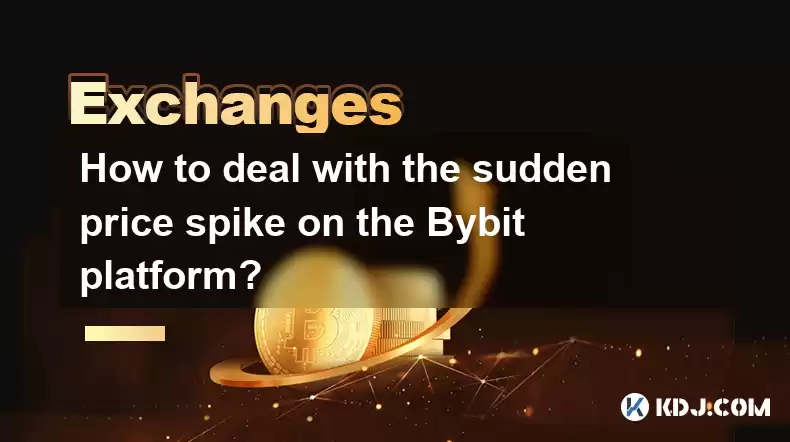
Understanding Bybit's Price Volatility
Bybit, like other cryptocurrency exchanges, experiences price volatility. Sudden price spikes, often driven by news events, market sentiment, or whale activity, can present both opportunities and risks. Understanding how to react to these fluctuations is crucial for successful trading. This article will explore strategies for managing these events, focusing solely on actions within the Bybit platform itself. Remember, cryptocurrency trading is inherently risky, and no strategy guarantees profit.
Identifying a Price Spike
The first step is recognizing a price spike. This often involves monitoring your open positions and watching the market charts. Look for significant and rapid price increases in a short period. Bybit provides various charting tools and indicators to help identify these movements. Consider setting up price alerts to notify you of significant changes, allowing for proactive management. Paying close attention to news and social media related to the asset in question is also vital.
Strategies for Managing a Price Spike: Existing Positions
If you hold open positions during a price spike, your approach depends on your trading strategy and risk tolerance.
- If your position is profitable: You might consider taking partial or full profits to secure gains. This reduces your exposure to potential losses if the price corrects. However, remember that the price could continue to rise.
- If your position is losing: You might consider averaging down (buying more to lower your average entry price) if you believe the asset's long-term prospects are positive. This is a high-risk strategy and should only be employed with careful consideration and risk management. Alternatively, you can cut your losses and exit the position to limit further damage.
- Adjust Stop-Loss Orders: If you have stop-loss orders in place, ensure they are appropriately adjusted to reflect the current market conditions. A sudden spike might trigger your stop-loss prematurely if not managed carefully. Consider widening your stop-loss to avoid accidental liquidation.
Strategies for Managing a Price Spike: No Existing Positions
If you don't have open positions, a price spike presents a potential opportunity or a warning sign.
- Potential Opportunity: If you believe the price increase is sustainable, you might consider entering a long position. However, this is a risky move, as a price correction could lead to significant losses. Thorough research and analysis are essential before entering any trade.
- Warning Sign: A sudden spike can indicate extreme market volatility. This could signal an impending correction. It might be wise to wait for the price to stabilize before entering any positions. Consider observing the market for a while to assess the sustainability of the price movement.
Utilizing Bybit's Tools
Bybit offers several tools to help manage price volatility:
- Stop-Loss Orders: These automatically close your position when the price reaches a predetermined level, limiting potential losses.
- Take-Profit Orders: These automatically close your position when the price reaches a predetermined level, securing profits.
- Trailing Stop Orders: These adjust your stop-loss order as the price moves in your favor, locking in profits while minimizing losses.
- Leverage Management: Carefully manage your leverage to reduce the risk of liquidation during price spikes. Higher leverage magnifies both profits and losses.
Emotional Control and Risk Management
Maintaining emotional control is paramount during price spikes. Avoid impulsive decisions driven by fear or greed. Stick to your trading plan and risk management strategy. Never invest more than you can afford to lose. Consider using a demo account to practice your strategies before risking real funds.
Frequently Asked Questions
Q: What causes sudden price spikes on Bybit?
A: Sudden price spikes can be caused by various factors, including significant news events (e.g., regulatory announcements, technological breakthroughs), large-scale buying pressure (whale activity), market manipulation, or a combination of these factors. The cryptocurrency market is highly susceptible to rapid price fluctuations due to its relatively small size and high volatility.
Q: How can I protect myself from significant losses during a price spike?
A: Employing robust risk management techniques is crucial. This includes using stop-loss orders, limiting leverage, diversifying your portfolio, and only investing capital you can afford to lose. Thorough research and understanding of market dynamics are also essential.
Q: Should I always take profits during a price spike?
A: Not necessarily. Taking profits can secure gains, but it also risks missing out on further price appreciation. The decision depends on your individual trading strategy, risk tolerance, and assessment of the market's future trajectory. Careful consideration is crucial.
Q: What if my stop-loss order is triggered prematurely during a flash crash?
A: Flash crashes can trigger stop-loss orders unexpectedly. To mitigate this, consider using trailing stop orders or wider stop-loss levels. However, widening stop-loss levels increases the risk of larger losses if the price continues to decline.
Q: Are there any Bybit-specific tools to help manage price spikes?
A: Yes, Bybit offers several tools such as stop-loss orders, take-profit orders, trailing stop orders, and leverage adjustments to help manage price volatility. Understanding and effectively utilizing these tools is crucial for navigating price fluctuations.
Q: How do I determine the appropriate level for my stop-loss and take-profit orders?
A: This depends on your risk tolerance and trading strategy. Some traders use technical analysis indicators, while others use fixed percentages or price levels based on their risk assessment. There's no one-size-fits-all answer; it's a crucial aspect of individual trading plan development.
Disclaimer:info@kdj.com
The information provided is not trading advice. kdj.com does not assume any responsibility for any investments made based on the information provided in this article. Cryptocurrencies are highly volatile and it is highly recommended that you invest with caution after thorough research!
If you believe that the content used on this website infringes your copyright, please contact us immediately (info@kdj.com) and we will delete it promptly.
- Cryptocurrency, Altcoins, and Profit Potential: Navigating the Wild West
- 2025-08-04 14:50:11
- Blue Gold & Crypto: Investing Disruption in Precious Metals
- 2025-08-04 14:30:11
- Japan, Metaplanet, and Bitcoin Acquisition: A New Era of Corporate Treasury?
- 2025-08-04 14:30:11
- Coinbase's Buy Rating & Bitcoin's Bold Future: A Canaccord Genuity Perspective
- 2025-08-04 14:50:11
- Coinbase's Buy Rating Maintained by Rosenblatt Securities: A Deep Dive
- 2025-08-04 14:55:11
- Cryptos, Strategic Choices, High Returns: Navigating the Meme Coin Mania
- 2025-08-04 14:55:11
Related knowledge
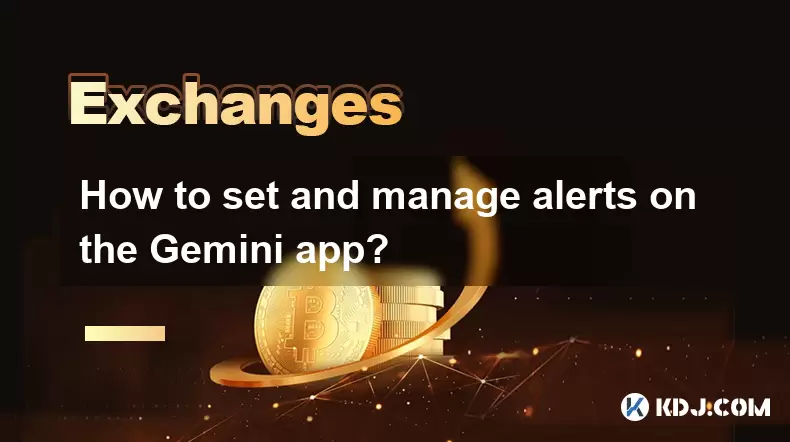
How to set and manage alerts on the Gemini app?
Aug 03,2025 at 11:00am
Understanding the Gemini App Alert SystemThe Gemini app offers users a powerful way to stay informed about their cryptocurrency holdings, price moveme...
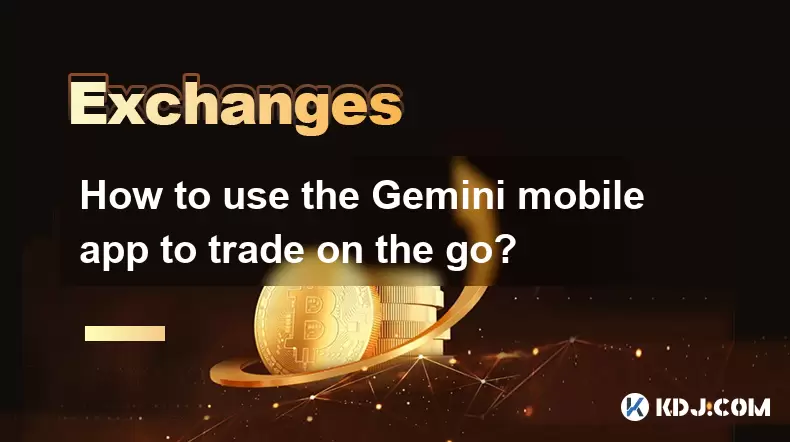
How to use the Gemini mobile app to trade on the go?
Aug 04,2025 at 09:14am
Setting Up the Gemini Mobile AppTo begin trading on the go using the Gemini mobile app, the first step is installing the application on your smartphon...
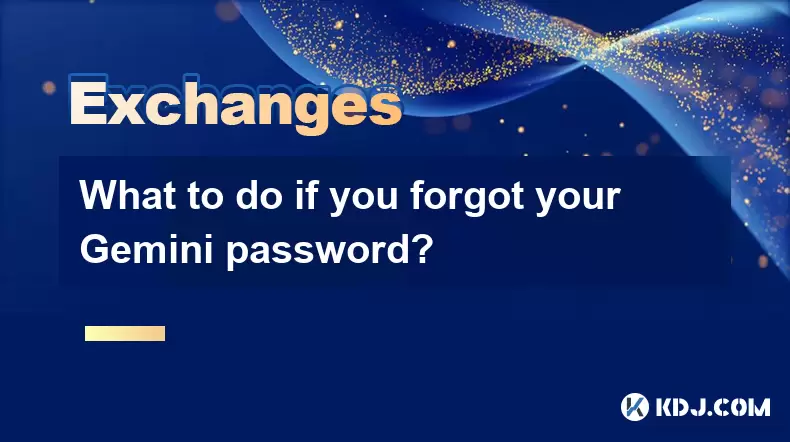
What to do if you forgot your Gemini password?
Aug 04,2025 at 03:42am
Understanding the Role of Passwords in Gemini AccountsWhen using Gemini, a regulated cryptocurrency exchange platform, your password serves as one of ...
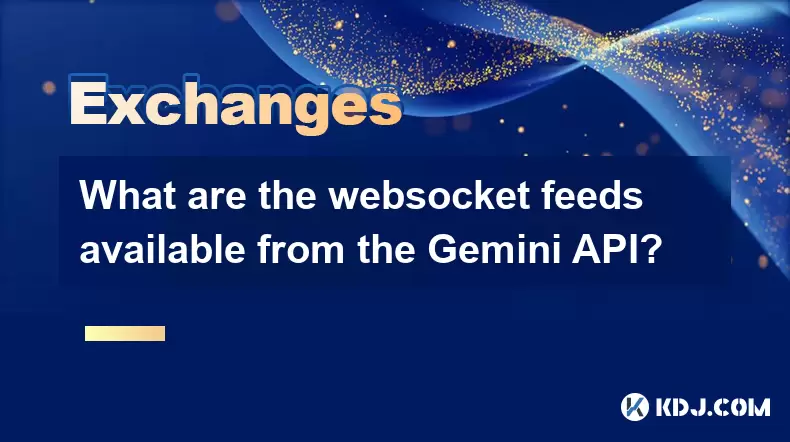
What are the websocket feeds available from the Gemini API?
Aug 03,2025 at 07:43pm
Overview of Gemini WebSocket FeedsThe Gemini API provides real-time market data through its WebSocket feeds, enabling developers and traders to receiv...
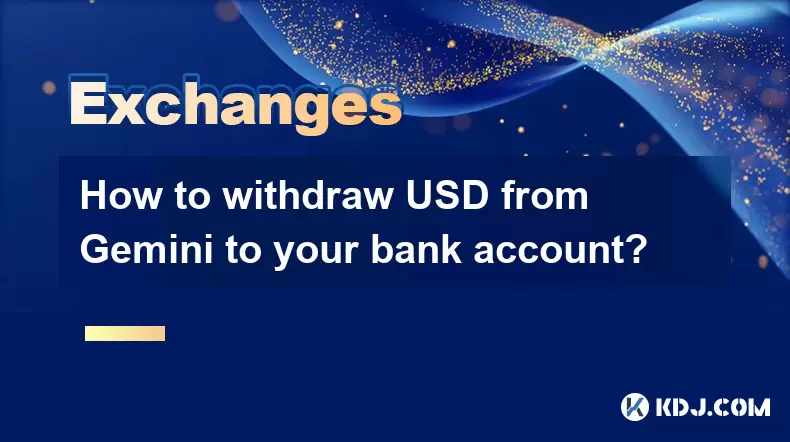
How to withdraw USD from Gemini to your bank account?
Aug 04,2025 at 11:01am
Understanding Gemini and USD WithdrawalsGemini is a regulated cryptocurrency exchange platform that allows users to buy, sell, trade, and store digita...
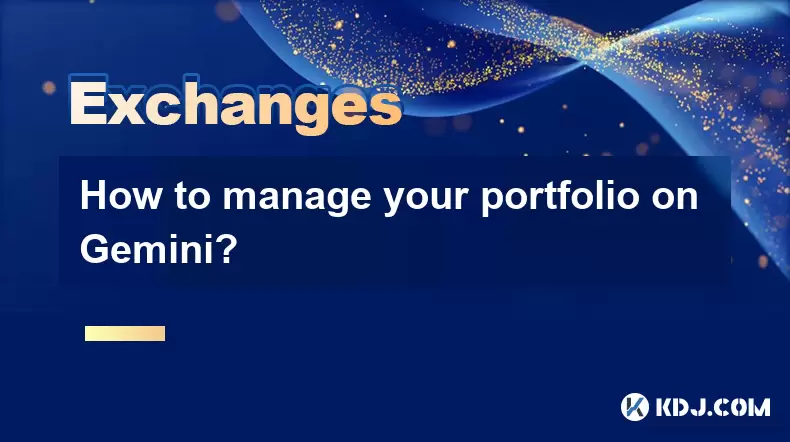
How to manage your portfolio on Gemini?
Aug 03,2025 at 10:36am
Accessing Your Gemini Portfolio DashboardTo begin managing your portfolio on Gemini, you must first log in to your account through the official websit...

How to set and manage alerts on the Gemini app?
Aug 03,2025 at 11:00am
Understanding the Gemini App Alert SystemThe Gemini app offers users a powerful way to stay informed about their cryptocurrency holdings, price moveme...

How to use the Gemini mobile app to trade on the go?
Aug 04,2025 at 09:14am
Setting Up the Gemini Mobile AppTo begin trading on the go using the Gemini mobile app, the first step is installing the application on your smartphon...

What to do if you forgot your Gemini password?
Aug 04,2025 at 03:42am
Understanding the Role of Passwords in Gemini AccountsWhen using Gemini, a regulated cryptocurrency exchange platform, your password serves as one of ...

What are the websocket feeds available from the Gemini API?
Aug 03,2025 at 07:43pm
Overview of Gemini WebSocket FeedsThe Gemini API provides real-time market data through its WebSocket feeds, enabling developers and traders to receiv...

How to withdraw USD from Gemini to your bank account?
Aug 04,2025 at 11:01am
Understanding Gemini and USD WithdrawalsGemini is a regulated cryptocurrency exchange platform that allows users to buy, sell, trade, and store digita...

How to manage your portfolio on Gemini?
Aug 03,2025 at 10:36am
Accessing Your Gemini Portfolio DashboardTo begin managing your portfolio on Gemini, you must first log in to your account through the official websit...
See all articles

























































































